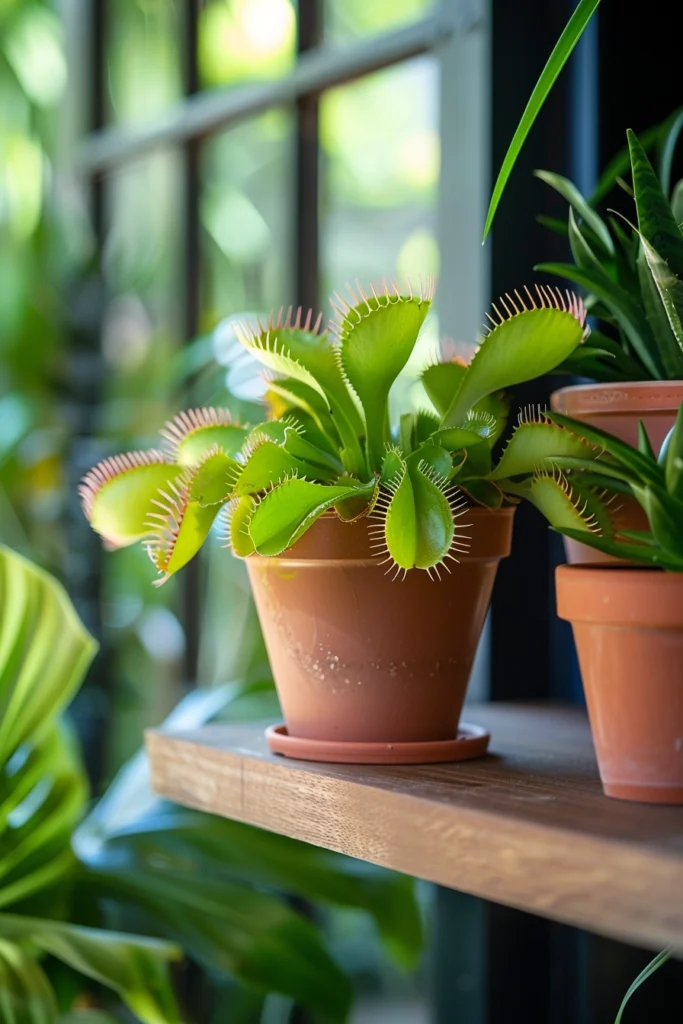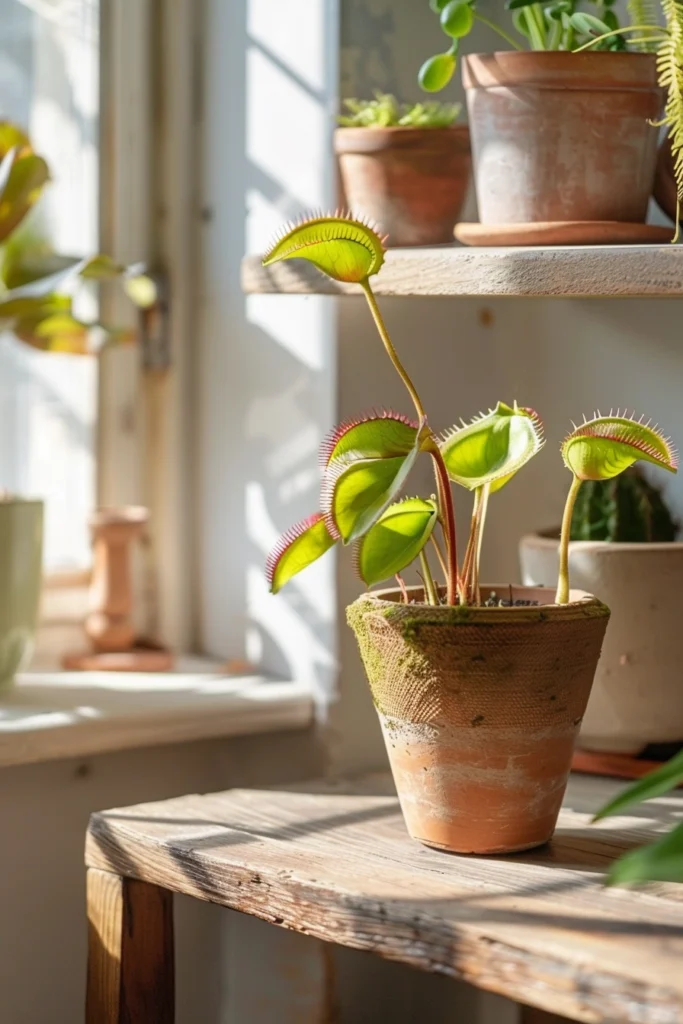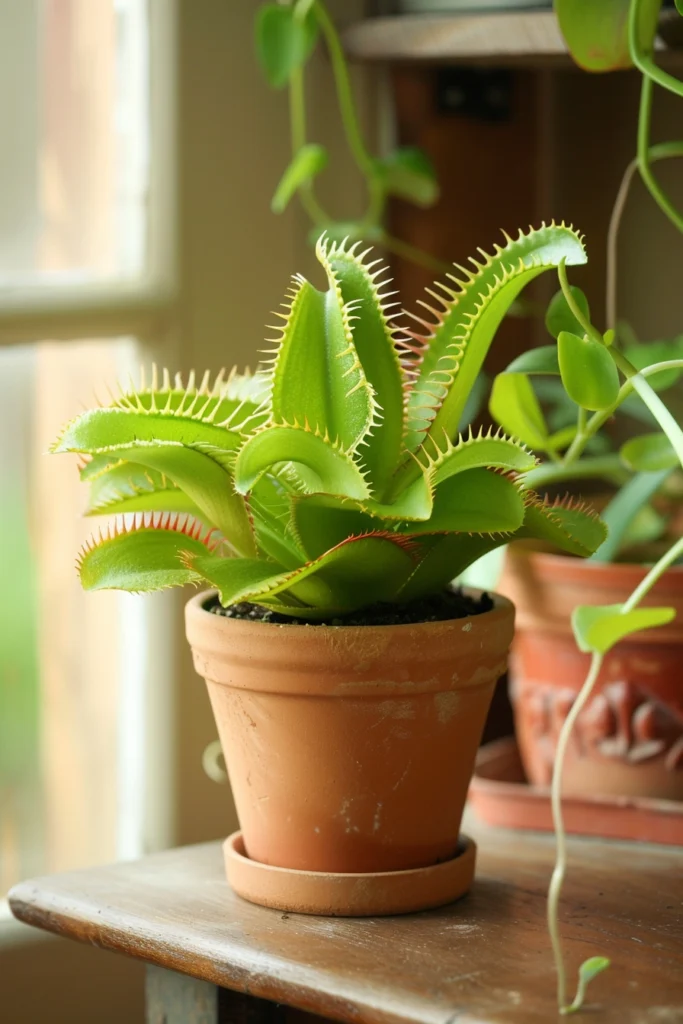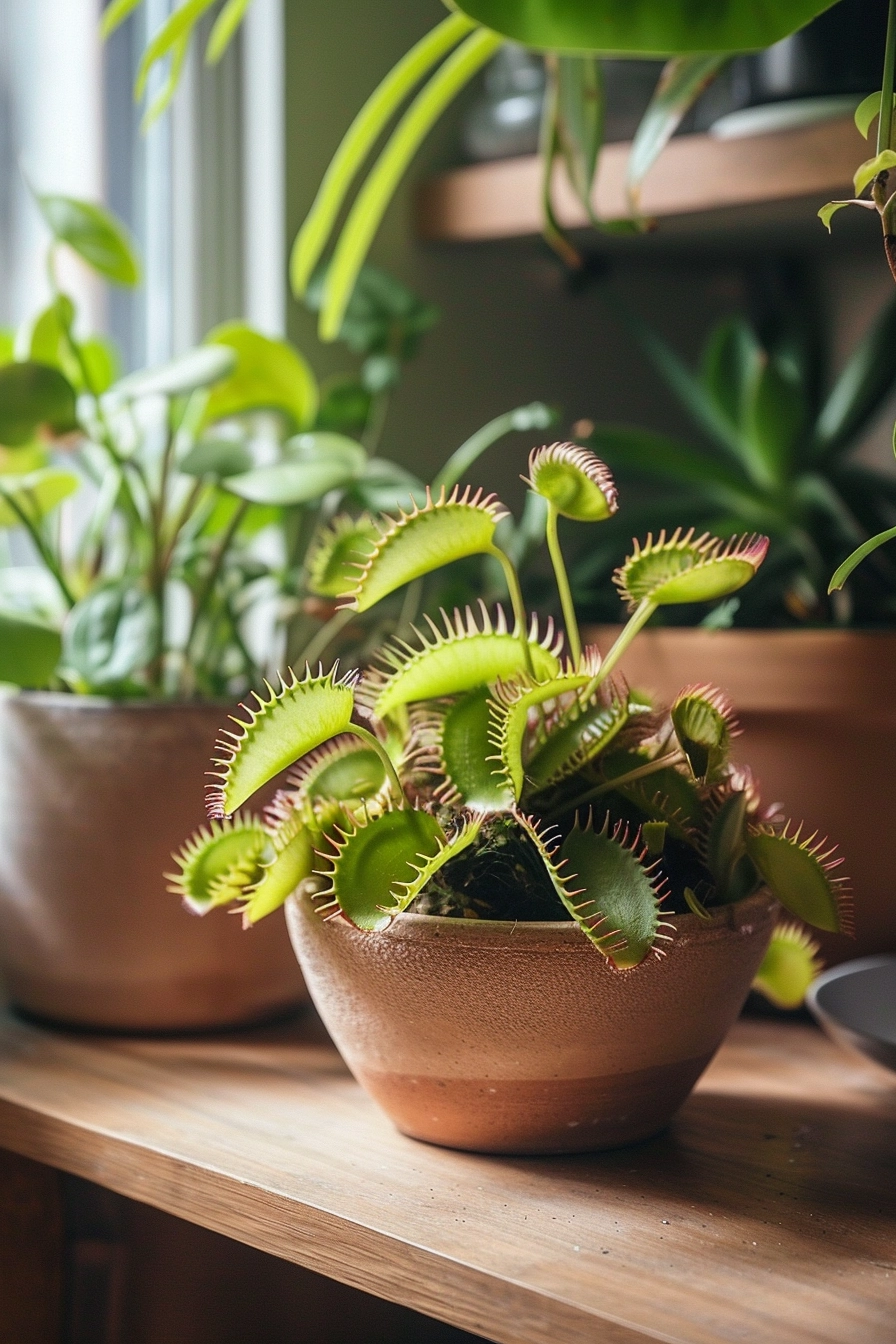Have you ever heard of plants that eat insects? It may sound like something out of a science fiction movie, but carnivorous houseplants are a real and fascinating phenomenon. These plants have evolved unique mechanisms to trap and digest insects and other small prey, making them a captivating addition to any garden or indoor space.
Carnivorous plants, also known as insectivorous plants, can be found in environments with low soil nutrient levels, such as bogs and wetlands. In these habitats, they rely on catching and consuming insects to supplement their nutrient intake. Some popular and intriguing types of carnivorous plants include the Venus Flytrap, Pitcher Plant, Sundew, Cobra Plant, and Waterwheel Plant.
What sets carnivorous plants apart is their ability to catch prey. They have developed various adaptations to lure and trap insects, such as trigger hairs, digestive enzymes, and sticky hairs. For example, the Venus Flytrap has leaves that resemble an open mouth, snapping shut when triggered by an insect. The Pitcher Plant has tube-shaped leaves filled with digestive enzymes, while the Sundew plant has sticky, glandular hairs that trap and consume small insects.
Caring for carnivorous houseplants can be a unique challenge, but the rewards are well worth it. These plants thrive in nutrient-poor soils, so using specialized carnivorous plant soil or a mix of peat moss and perlite is essential. They also require higher humidity levels, so placing them in a terrarium or using a humidity tray can help create the right environment. Bright, indirect sunlight is crucial for their growth, and watering should be done carefully, using distilled or rainwater to avoid harming the plants with tap water minerals.
Key Takeaways:
- Carnivorous houseplants have evolved to trap and digest insects and other small prey.
- The Venus Flytrap, Pitcher Plant, Sundew, Cobra Plant, and Waterwheel Plant are popular types of carnivorous plants.
- Carnivorous plants have specialized adaptations like trigger hairs and sticky hairs to catch and consume prey.
- Caring for carnivorous houseplants involves using specialized soil, maintaining higher humidity levels, and providing bright, indirect sunlight.
- Watering carnivorous plants should be done with distilled or rainwater to avoid harmful minerals found in tap water.

Types of Carnivorous Houseplants
There are several fascinating types of carnivorous houseplants, each with its own unique adaptations and methods of trapping and digesting prey. Let’s explore some of the most intriguing examples.
Venus Flytrap
The Venus Flytrap is one of the most well-known and captivating carnivorous plants. Its leaves resemble an open mouth, snapping shut in a split second when triggered by an insect landing on them. This rapid movement ensures efficient prey capture and sets it apart as a true marvel of nature.
Pitcher Plant
Another remarkable carnivorous houseplant is the Pitcher Plant. Its tube-shaped leaves attract insects, enticing them into a pool of digesting enzymes within the plant. The plant’s downward-pointing hairs prevent the insects from escaping, ensuring a steady supply of nutrients.
Sundew Plant
The Sundew plant is known for its delicate beauty and deadly allure. Its leaves are covered in sticky, glandular hairs that trap and consume unsuspecting insects. As the insects struggle, the plant’s enzymes go to work, breaking down their bodies for essential nutrients.
Cobra Plant
The Cobra Plant features a unique hooded tube shape that resembles a cobra’s head. This intriguing design attracts insects, luring them into a pool of digestive enzymes for consumption. The Cobra Plant’s striking appearance and efficient trapping mechanism make it a captivating addition to any carnivorous plant collection.
Waterwheel Plant
Lastly, we have the Waterwheel Plant, an aquatic carnivorous marvel. Its blade-like leaves float on the water’s surface, capturing and breaking down tiny aquatic animals. This specialized adaptation allows the Waterwheel Plant to thrive in watery habitats, exhibiting its remarkable ability to adapt to various environments.
Each of these carnivorous houseplants possesses its own distinct characteristics and adaptations, making them a fascinating and unique group of plants to observe and care for. Their captivating trapping mechanisms and methods of prey digestion highlight the wonders of the natural world and the incredible diversity of flora.

Care Tips for Carnivorous Houseplants
To care for carnivorous houseplants, it is important to create an environment that mimics their natural habitats. They thrive in nutrient-poor soils, so using a specialized carnivorous plant soil or a mixture of peat moss and perlite is recommended.
Carnivorous plants require higher humidity levels, so placing them in a terrarium or using a humidity tray can help maintain the necessary moisture levels.
They also need bright, indirect sunlight, so a sunny windowsill or the use of artificial grow lights can provide the right amount of light.
Watering carnivorous plants can be tricky – they should be kept consistently moist, but not overly saturated. Distilled or rainwater should be used instead of tap water, as the minerals in tap water can be harmful to these plants.
Feeding carnivorous plants is not necessary, as they obtain their nutrients from the insects they catch, but if needed, live bugs or dried mealworms can be added sparingly.
With proper care and attention, carnivorous houseplants can thrive and continue to fascinate with their unique adaptations and insect-trapping abilities.
Stay in tune with nature
By recreating the natural conditions that carnivorous plants thrive in, you can provide them with the optimal care they need to flourish in your indoor garden. Simulating their habitat ensures that they receive the right amount of sunlight, humidity, and nutrients, allowing these captivating Carnivorous Plant Species to thrive.”

Conclusion
As I conclude my exploration of the fascinating world of carnivorous houseplants, I am left in awe of the incredible adaptations these plants have developed to catch and consume insects. From the striking Venus Flytrap to the alluring Pitcher Plant and the captivating Sundew, each species possesses unique mechanisms and traits that make them a captivating addition to any garden or indoor space.
While it is true that carnivorous houseplants require specific care and attention, such as maintaining higher humidity levels and using specialized soil, the satisfaction and rewards that come with witnessing these plants in action and caring for them are unparalleled. Whether you’re an experienced plant enthusiast or someone new to the world of carnivorous plants, the journey of exploring and learning about these insect-eating flora is sure to ignite a sense of wonder and appreciation for the wonders of the natural world.
The diverse range of carnivorous plants, including the Venus Flytrap, Pitcher Plant, Sundew, Cobra Plant, and Waterwheel Plant, demonstrates the endless diversity and ingenuity of the plant kingdom. By inviting these captivating specimens into your home or garden, you not only add a touch of intrigue and beauty but also become an active part of nature’s fascinating cycle of insect predation. So, let the world of carnivorous houseplants inspire you and ignite your curiosity as you embark on this unique and rewarding botanical journey.

